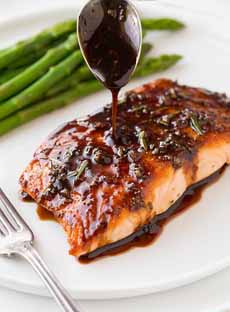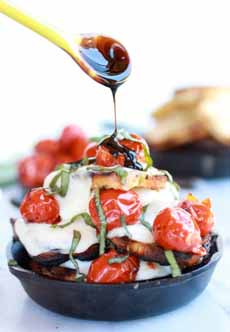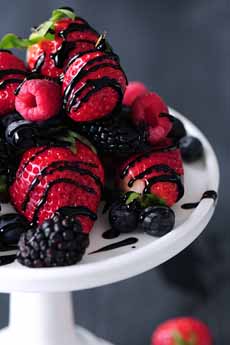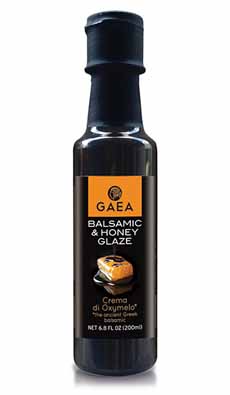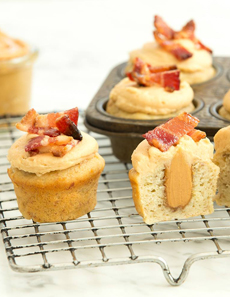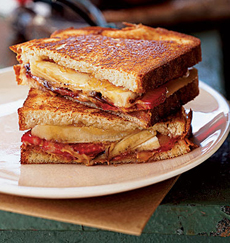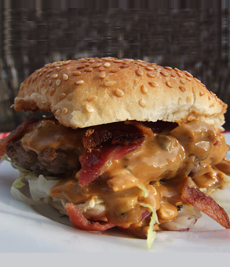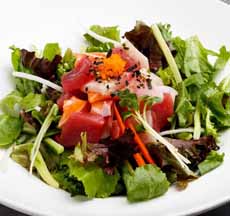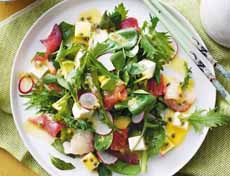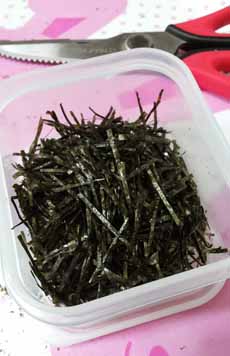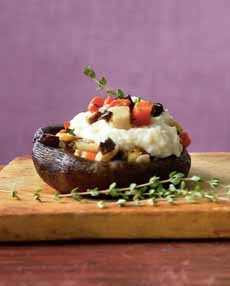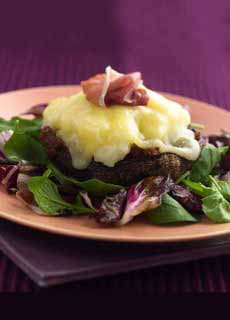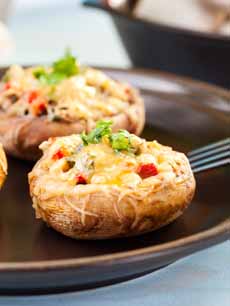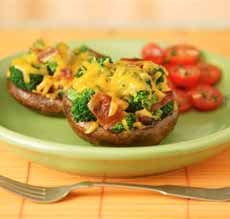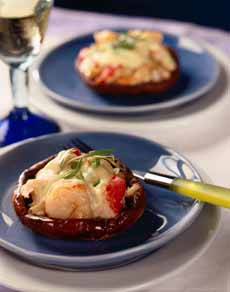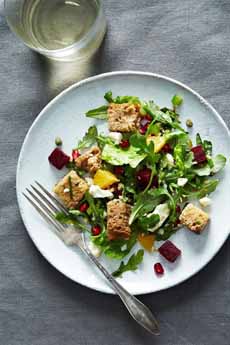

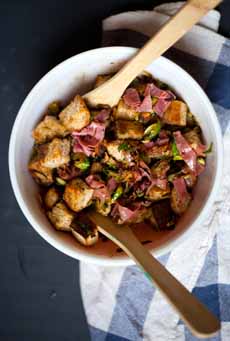
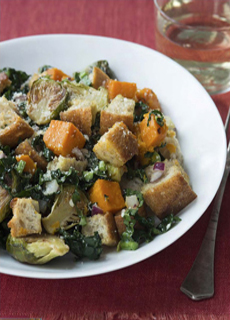
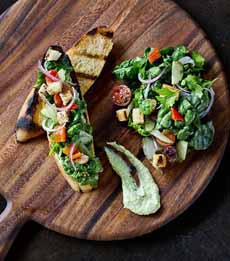
[1] Bright colors in a winter panzanella. Here’s the recipe from Food 53. [2] With squash and sage from Good Eggs. [3] “Ham on rye” bread salad recipe from Betty Crocker. [4] Winter Panzanella Salad With Squash & Brussels Sprouts from Hot Bread Kitchen. [5] Winter “panzanella crostini” at The Tuck Room | NYC. |
|
Bread salad, like French toast and croutons, is one of those delicious foods invented by necessity: Poor people needed to get another meal from bread that had gone stale.
THE HISTORY OF PANZANELLA SALAD
While some type of bread salad likely cropped up wherever people ate bread, panzanella is a Tuscan-style bread salad made with a loaf of day-old (or older) Italian bread, cubed into large croutons and soaked in vinaigrette to soften it. Chopped salad vegetables are added.
The translation we have found for “panzanella” is “bread in a swamp,” the swamp being the vinaigrette in which it the bread was soaked. When there wasn’t enough oil to spare, the bread was moistened in water.
While today’s recipes are rich in ingredients, the original preparers foraged to pull together vegetables from the garden: cucumber, onion, tomato—and possibly purslane, a salad green that grows wild. Early recipes were heavy on the onions, the cheapest ingredient to pair with the bread.
This peasant dish has become a popular first course in Italy. It doesn’t appear often on menus of U.S.-based Italian restaurants. That’s too bad, because it’s a dish worth knowing; but it’s also a salad that’s easy to make…
Especially when you have a leftover baguette or other loaf, as we often do. (If you stick the leftovers in the freezer for some TBD use, put it to use!)
While crusty Italian loaves were used in the original, you can use any bread from challah to semolina raisin to sourdough.
Bread salad is not a lettuce salad. You should toss in some small greens with a bite—arugula, mustard greens and watercress, along with radishes and red onions. But keep the mesclun mix and romaine for lettuce salads.
RECIPE: DIY WINTER PANZANELLA SALAD
Winter is no time to repurpose summer vegetables like tomatoes, yellow squash and zucchini. Instead, look for year-round options and root vegetables. (Here’s a list of winter fruits and vegetables.)
You can add the root vegetables raw or roasted. Carrots are a dual-usage veg, as are beets, celery roots and turnips—the latter ideally halved or cut into very thin slices.
Pick Your Ingredients
Bell peppers
Capers
Celery
Cheese: cubed, shredded
Cherry or grape tomatoes
Citrus: orange or red grapefruit segments
Cucumbers
Crucifers: arugula, bok choy, broccoli, brussels sprouts, cabbage, cauliflower, collard greens, kale, kohlrabi, mizuna, mustard greens, radish, rapeseed/canola, rapini (broccoli rabe), rutabaga, tatsoi, turnips, watercress*
Herbs: basil, cilantro, dill, parsley, sage
Mushrooms
Onions
Protein: anchovies, chicken/turkey, ham, hard-boiled eggs, prosciutto, sardines, tuna
Non-crucifer root vegetables, raw or roasted: beets, carrots, Jerusalem artichokes, jicama, parsnips, radishes turnips
Spices: crushed coriander seeds, fennel seeds, red flakes
Winter greens: chard, collards, kale, rapini
Winter squash, roasted (acorn, butternut, etc.)
Garnishes
Cheese: crumbled
Nuts and seeds, including pomegranate arils
Roasted garlic cloves
Herbs
Plan a variety of colors; not just green but red (e.g. beets, bell pepper, grapefruit), orange (e.g. mandarins, oranges, winter squash) and yellow (beets, bell peppers, cherry/grape tomatoes).
Don’t forget to season with salt and freshly-ground pepper.
Vinaigrette
Lastly, you need a good vinaigrette. Pick your favorite or use a the conventional red wine vinegar and EVOO, with or without an added half teaspoon of mushrooms.
The emphasis is on “good”: Red wine vinegar can be stringent. Seek out the good stuff. Good doesn’t mean expensive:
Pompeian, about $2.60 for 16 ounces.
Holland House Red Wine Vinegar, about $3.29 for 12 ounces
Laurent du Clos, $5.49 for 16.9 ounces (worth it!)
The traditional vinaigrette ratio is 3 parts oil to 1 part vinegar; the recipes above are written as such. But the important thing to keep in mind is that you are the only one who knows exactly how acidic and how viscous you want your dressing to be.
More oil will mute flavors but add body and mouthfeel.
More acidity can be helpful if the salad ingredients have stronger flavor (think heartier greens).
To add pungency (e.g., with mustard) or sweetness (e.g., with honey), start with a half teaspoon per half cup of vinaigrette. Taste and adjust to your preference.
|



